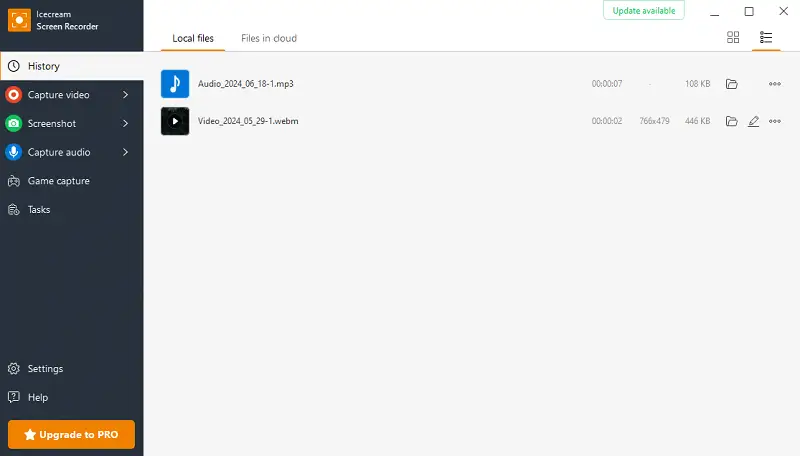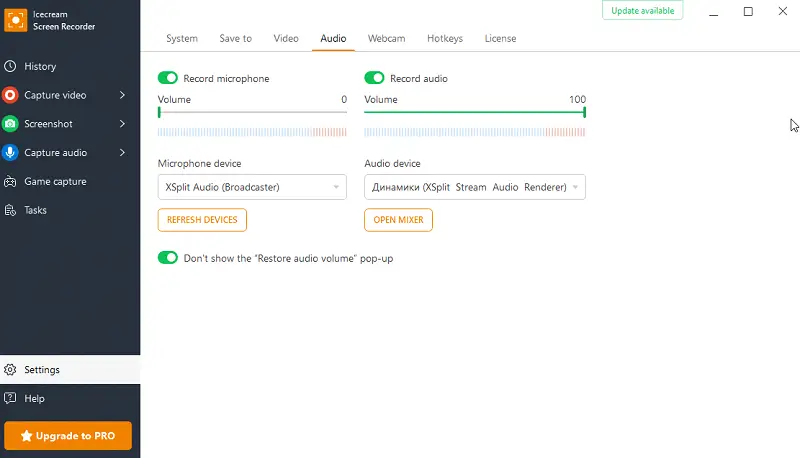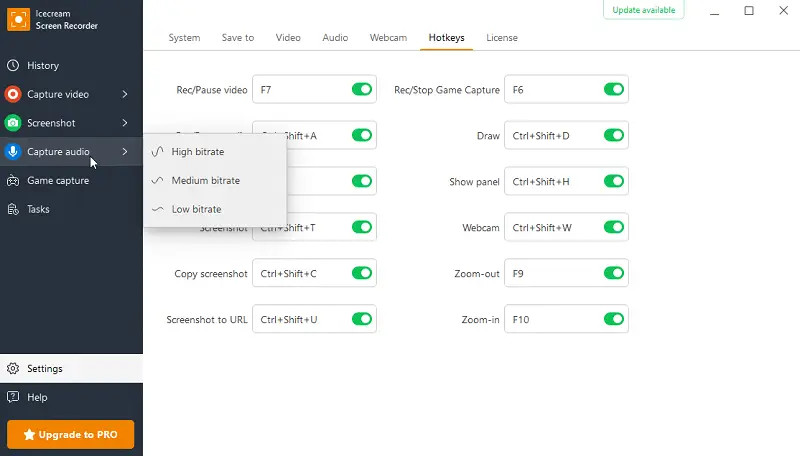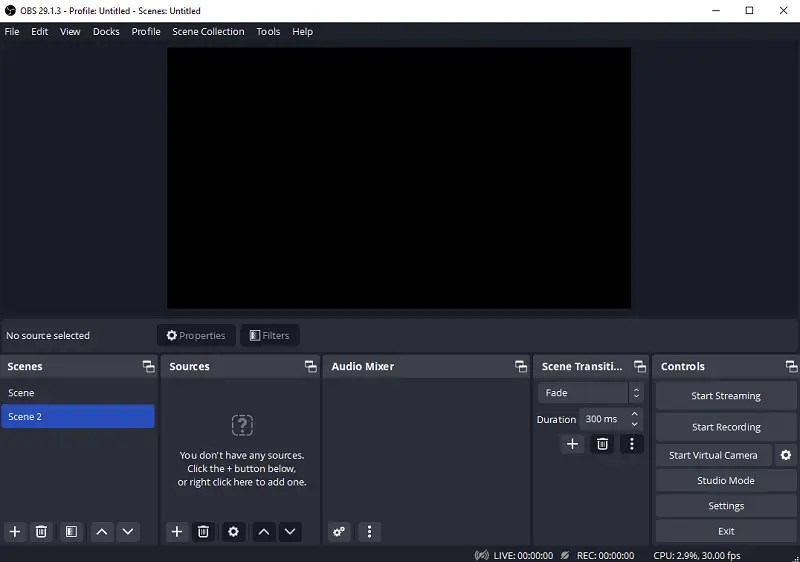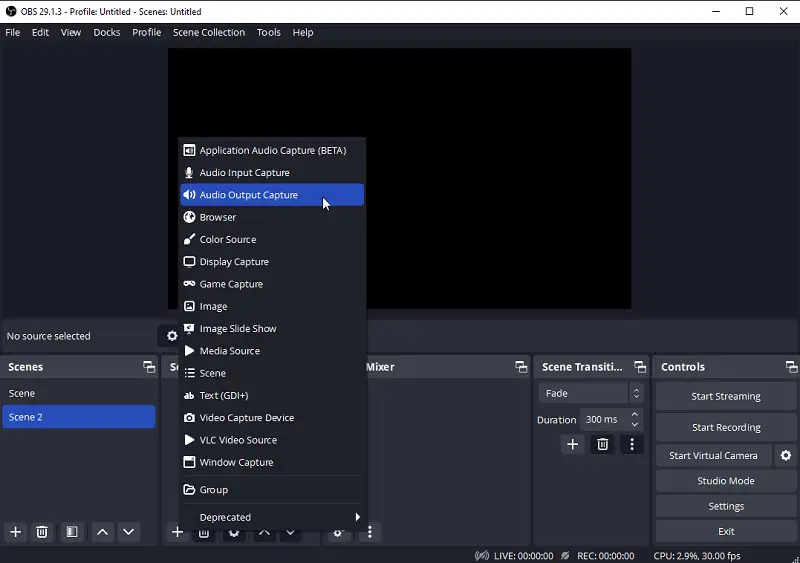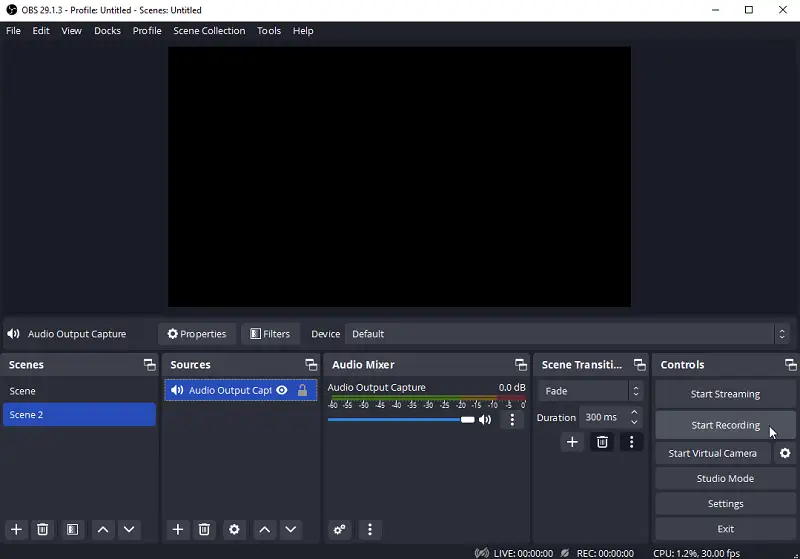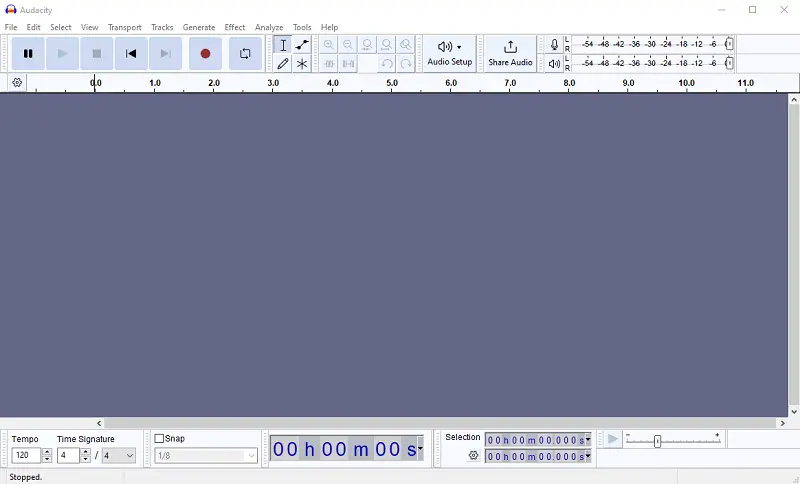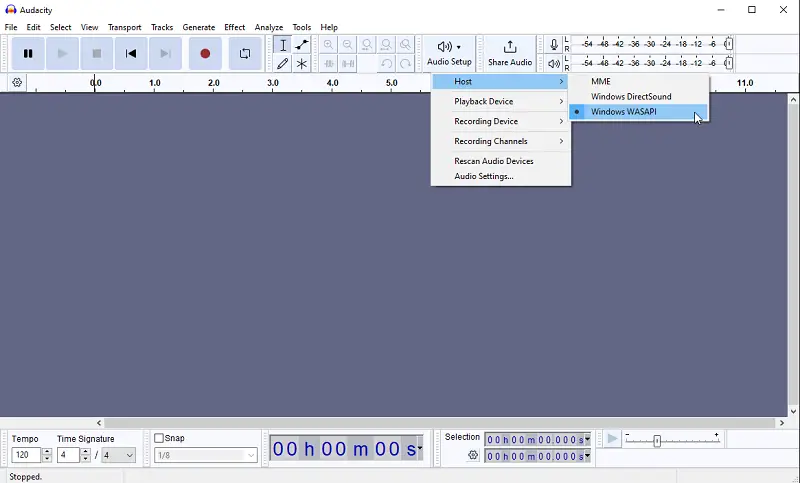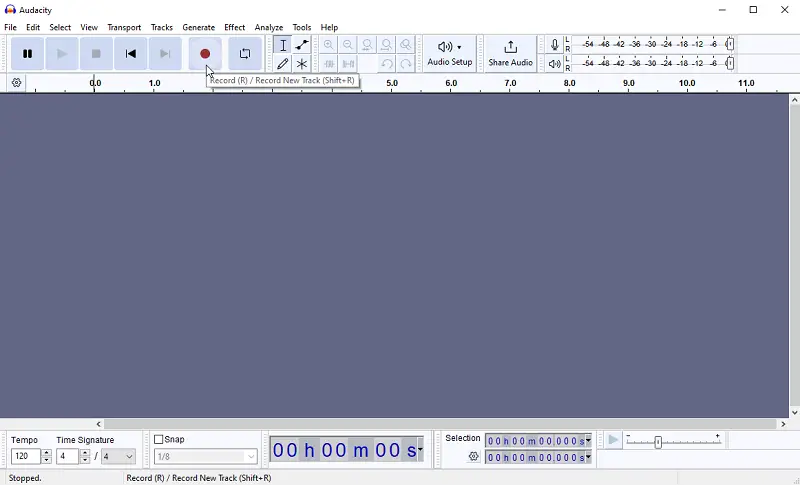5 Ways to Record Website Audio on PC
Knowing how to record audio from a website is more useful than most people realize. Whether you’re hoping to save an important lecture, hang onto a podcast you love, or just keep a memorable clip for later, having that skill comes in handy.
In this guide, I’ll show you the steps and a few reliable tools to record audio from internet. I’ll also touch on how to do it efficiently and — let’s not forget — legally.
Icecream Screen Recorder
Icecream Screen Recorder is versatile software designed for capturing desktop activity on your computer. This application offers a range of features that make it suitable for creating video tutorials, recording audio, seizing meetings, and more.
How to record website audio with Icecream Screen Recorder
- Download screen recorder for Windows.
- Run the installer and follow the on-screen instructions. Open the free screen recorder from your desktop or start the menu.
- Click the settings icon to adjust the recording preferences and save location. Check the audio settings.
- Locate "Capture audio" in the left side menu. Pick the bitrate level.
- Open the needed webpage and turn on the track. In the application, set the recording timer if required and press "Rec".
- Once you have captured the desired audio, hit the "Stop" button.
How to choose the bitrate level
Selecting the appropriate bitrate level for audio capture depends on your specific needs for quality, created file size, and the intended use of the recording.
Here's a guide to help you decide between high, medium, and low bitrate options:
| Level | Bitrate Range | Best For | Considerations |
|---|---|---|---|
| High | 192 kbps and above. | - High-fidelity music. - Professional tapes. | - Best audio quality. - Suitable for music with complex soundscapes. - Large. |
| Medium | 128 - 192 kbps. | - General use (e.g., online streaming, voiceovers). | - Good balance between audio quality and file size. - Fine for most purposes including podcasts. |
| Low | Below 128 kbps. | - Voice tracks. - Bandwidth-sensitive applications. | - Small. - Acceptable for spoken word, lectures, and situations where audio quality is less critical. |
| Very Low | Below 64 kbps. | - Extremely limited storage or bandwidth conditions. | - Minimal weight. - Noticeable reduction in audio quality, suitable only for basic voice tracks. |
This free audio recorder for Windows PC is designed with ease of use in mind, enabling even beginners to extract audio from the website with minimal effort. It supports scheduled screen captures, allowing to set specific start and end times.
Moreover, you can shot audio from the browser, system sounds as well as microphone input. This dual audio capture capability is ideal for tracking gameplay, webinars, or any scenario where both system sound and commentary are required.
OBS Studio
OBS Studio is a free and open-source screen recorder suite designed for capturing, compositing, encoding, and broadcasting content. It is primarily targeted at gamers, content creators, and live streamers. Its main strength is video documenting and streaming. However, its versatile settings and features also allow you to lay browser audio.
How to capture audio from the website using OBS Studio
- Visit the website and download the installer suitable for your operating system. Open the program.
- Navigate to the bottom left corner and click the "+" icon under the "Sources" box.
- Choose "Audio Output Capture" from the list. This will log the sound from your computer, including from websites.
- A new window will appear. In the "Create/Select Source" window, give your audio a name. Proceed with "OK".
- In the "Properties" window that appears pick the audio output device. Hit "OK" to apply the settings.
- Locate the "Mixer" section and adjust volume levels of your recording using the sliders.
- Press "Start Recording". Go to the website and play the audio you wish to capture. When you are done tap "Stop Recording".
OBS Studio will automatically save your audio to the designated location on your computer (the default one is usually in your Videos folder).
Audacity
Audacity is a popular, free, open-source audio editing and recording software known for its versatility and powerful features. The program benefits from a large and active community providing forums, tutorials, and generated content to assist both new and experienced creators.
How to use Audacity to record music from the website
- Download the utility and install it on your PC. Open it.
- Click "Audio Setup" to select your sound input source.
- Choose "Windows WASAPI" (for Windows) or "Core Audio" (for macOS) as the device. These options allow you to capture all audio playing through your computer.
- Employ the microphone slider to set the volume. Aim to keep the levels in the green range to avoid distortion.
- Position application and the website you want to tape so that both are easily accessible.
- Press the red button to start recording. Once you've finished, hit "Stop".
Audacity allows you to edit your video recordings after they're captured. You can cut, copy, paste, and apply effects to enhance your art.
Chrome Audio Capture
Chrome Audio Capture is an extension designed specifically for recording music from web pages or tabs directly within the browser environment. Note that it will not catch system sounds or song from other applications running on your computer.
How to record sound from the browser with Chrome Audio Capture
- Open Google Chrome.
- Go to the Web Store and search for "Chrome Audio Capture". Install the extension.
- Click the extension icon to access settings and adjust any preferences if necessary.
- Navigate to the website with the audio you want to grab. Press the recorder icon in the toolbar.
- Hit "Start Capture" or use the hotkey combination Ctrl + Shift + S. Play the audio.
- When you're finished recording, click the "Stop Capture" button or utilize Ctrl + Shift + X.
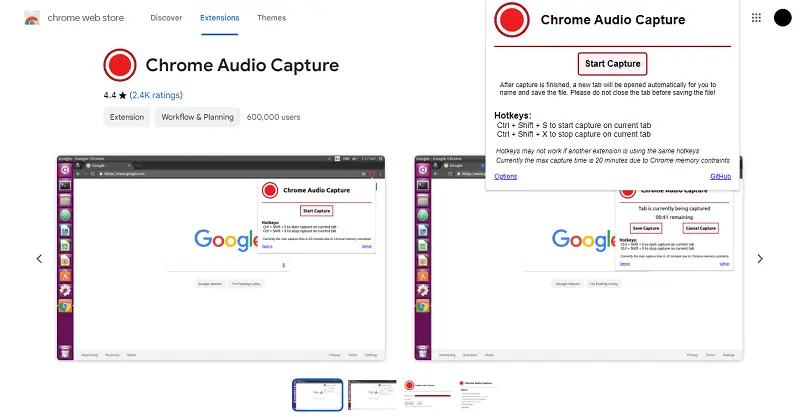
The service has a limit of 20 minutes per session. For long recordings, it will be necessary to start a new session. Be mindful of browser notifications, as they can also be captured.
Video Candy
Video Candy is an easy-to-use online tool for capturing directly from websites without the need to install software. It works entirely in your browser and focuses solely on recording audio from the specific page you’re on.
How to record browser audio with Video Candy
- Navigate to the Video Candy audio recorder page.
- Make sure the "Audio" option is selected.
- Hit "Start recording" and choose the desired tab.
- Grant the tool permission to access when prompted.
- Play the content from the page you desire to capture.
- Once you're done, hit the "Stop recording" button.
- Download the resulting file to your device.
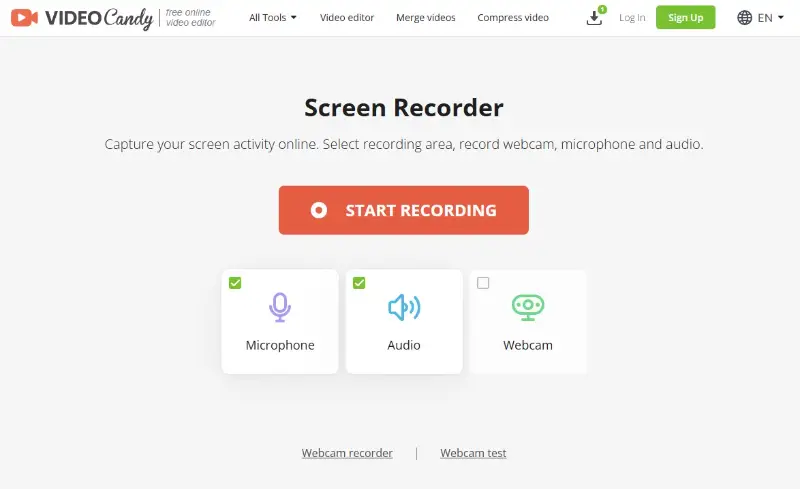
Recordings are saved securely online before being downloaded, but note that if you need the clip in audio format, you will have to convert video to MP3.
Tips on how to record web audio:
- Before you start capturing anything important, do yourself a favor and run a quick test. Check how things sound — ensure your voice is clear and there aren’t any odd noises sneaking in. Adjust your mic's sensitivity, bitrate, or whatever settings you have.
- Keep an eye on levels throughout the track. You want them steady and not creeping up too high. If the volume spikes and hits the red, you’ll probably end up with some harsh distortion — definitely not what you want. Tweak your input as needed.
- I always recommend using headphones. Listening in real time helps you catch any weird background sounds or quality issues right away, so you can fix them on the spot.
- If you’re aiming to capture a particular clip or part from a website, get it lined up. This way, you won’t have to sift through a bunch of unnecessary music later on.
- Save your output in a suitable format (such as MP3 or WAV). And don’t forget to back up your files!
- Keep your web audio recorder and browser up to date to verify compatibility and access to the latest features and security patches.
Is it legal to record audio from a website?
The answer isn’t as straightforward as most people would hope. It really hinges on a few factors: what you’re capturing, the website’s own policies, and the laws where you live.
Here are some key considerations:
- Copyright Laws. The majority of content online is protected by them. Logging it without the creator’s permission can get you into legal trouble. There are a few exceptions, like fair use for things such as research, education, or commentary — but those are complicated and depend a lot on local rules.
- Terms of Service. Most sites have terms and conditions (whether or not anyone actually reads them) that often ban unauthorized copying or sharing of their material. Breaking those rules could get you banned, or in more serious cases, facing consequences.
- Consent. When live audio is involved — say, webinars or virtual meetings—it’s crucial to know the privacy laws in your region. Some places require everyone involved to agree before you can legally record anything. Penalties aren’t fun.
- Public Domain and Creative Commons. Sometimes, you’ll stumble across music that’s free to utilize—either because it’s in the public domain or released under a Creative Commons license. If that’s the case, you’re generally in the clear, provided you stick to the license terms.
- Personal Use. In many regions, tracking something for your own reference (like offline listening) is usually okay, but as soon as you start distributing it, you’re likely crossing a line.
So, before you hit film, it’s worth taking a minute to check the rules. If you’re unsure, you can always reach out to the creator for permission or talk to a legal professional. I know it sounds a bit strange, but it’s a lot better than dealing with fees.
Checklist for website audio capture
- Double-check you’ve picked the right source — system or just the tab? Easy to mix those up.
- Mute any background apps or music. You want a clean track.
- Confirm it’s actually okay to catch audio from the site. Better safe than sorry.
- Turn off your mic if you don’t need it. That way, you won’t end up with any accidental chatter.
- See you’ve got enough storage space. Recordings, especially lengthy ones, can eat up memory fast.
- Use keyboard shortcuts to control the process. It’s a game-changer for efficiency.
FAQ
- What’s the best audio format when exporting recordings?
- Personally, I go with MP3 — it’s reliable, solid quality, and doesn’t hog all your space. If you really care about top-notch sound and don’t mind big files, WAV is the way to go.
- How do I manage background noise?
- Honestly, choosing a quiet place helps more than you’d think. If noise sneaks in, tools like Audacity can clean things up quite a bit.
- How can I ensure the best sound quality?
- Use a stable Internet connection to avoid buffering or interruptions. Get a high-quality microphone if you are recording voice, and set your settings to a higher bitrate. Reducing background noise and ensuring proper audio levels will also help improve quality.
- How do I avoid capturing unwanted content?
- Turn off notifications and close apps you don’t need. Enabling “Do Not Disturb” keeps things focused on what you want.
- Can I use these programs to shoot video as well as audio?
- Yes, Icecream Screen Recorder and OBS Studio can capture both video and audio. You can tape the entire screen, specific windows, or browser tabs along with the audio.
- How do I troubleshoot issues?
- First, check everything’s updated—software, browser. Tweak your settings if needed, and make sure no other apps are fighting for control of your audio.
Conclusion
Learning how to record website audio really opens up a lot of possibilities, both for fun and for work.
Whether you’re saving a live stream, archiving music, or want to keep a bit of audio for offline listening, knowing your way around these tools makes it simple.
Just remember to follow best practices, respect copyright, and you’ll be set. It’s a handy skill, and honestly, it’s easier than it looks once you get started.

